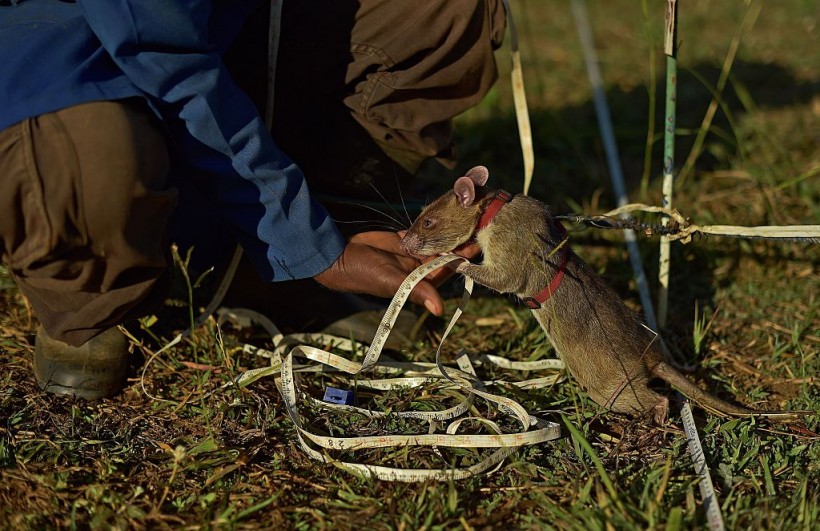Giant African pouched rats (Cricetomys gambianus) are as intelligent as they are adorable. Also known as bomb detector rats, these mammals can detect landmines, detect tuberculosis, and have even been used in the battle against wildlife poaching. They rescue humans from disaster zones in exchange for a reward if they are trained to wear little backpacks.
Now, a new study found that these rodents have an unusual approach to reproductive development, as females can open and then seal up their genitals throughout their adult life.

A rat handler played with an African giant pouched rat at APOPO's training facility in Morogoro on June 17, 2016.
The Amazing Reproductive Organ Transformation of Bomb Detector Rats
The new study, titled "Giant African Pouched Rats Can Open and Close Their Genitals Throughout Their Adult Life," published in the journal Current Biology, reports that the female giant African pouched rats can undergo astounding reproductive organ transformations.
Other rodents are notorious for their uncontrollable reproduction, but pouched rats are frustratingly unprolific. Behavioral ecologist Alex Ophir explained in 2019, when he was looking into the rats' breeding behavior that these rats have been so important in humanitarian work that they wanted to understand their reproductive behaviors and olfactory abilities.
So, they took a closer look at female rats that seemed to have sworn off having kids. Instead, they found it merely a closed shop as they sealed off their vaginas.
According to Science Alert, the females would have a smaller uterus and fused vaginal opening when closed. More so, their urine's chemical composition changed compared to those with normal vaginal openings and are active for breeding.
Angela Freeman, an ethologist from Cornell University, and her colleagues observed 23 transitions in the reproductive states of 17 out of 50 pouched rats. They noted that some of the rats transitioned more than once. When one of the actively breeding females died, seven opened up their genitals.
Aside from this, the team could not detect any environmental change. They wrote in their paper that it could be that females suppress the reproduction of others using pheromonal olfactory signals. The team thinks this mechanism might be so that other females could contribute to caring for the dominant reproducing female.
READ ALSO: Curious Rats To Help First Responders in Searching Earthquake Survivors Using Backpack Technology
Resource Competition Among Female Pouched Rats
Another theory the researchers proposed is resource competition. As per their press release, they think that too many offspring in a population limits the available food resources and reduces the number of babies born to other females, so there could be more for one's babies.
When a patent female with an open vagina died in Ophir's colony, seven non-patent females also started opening their genitals in just a short time. This supported the notion that changes in the social environment control the reproductive transition of pouched rats.
Furthermore, both patent and non-patent females did not differ in body mass and length but differed in vaginal probe depth, nipple size, cervix, uterine width, and urine and fecal matter.
Ophir said that there could be a lot more about the rat's reproductive morphology and physiology, given the findings of their study, which proves that some things are not as simple as people think.
RELATED ARTICLE: HeroRat Magawa Awarded Gold Medal for Detecting 39 Landmines
Check out more news and information on Rats at Science Times.














